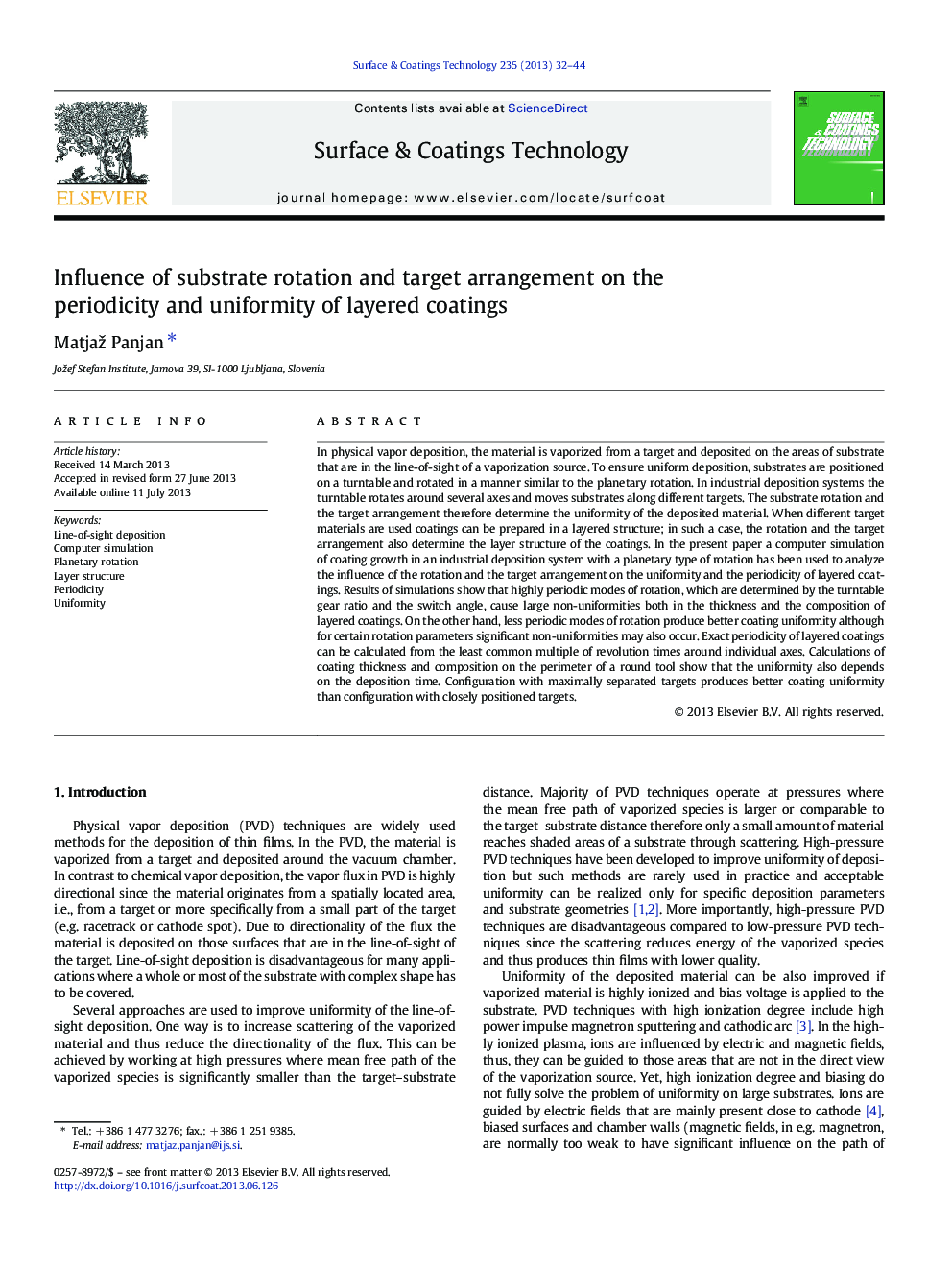| Article ID | Journal | Published Year | Pages | File Type |
|---|---|---|---|---|
| 8029117 | Surface and Coatings Technology | 2013 | 13 Pages |
Abstract
In physical vapor deposition, the material is vaporized from a target and deposited on the areas of substrate that are in the line-of-sight of a vaporization source. To ensure uniform deposition, substrates are positioned on a turntable and rotated in a manner similar to the planetary rotation. In industrial deposition systems the turntable rotates around several axes and moves substrates along different targets. The substrate rotation and the target arrangement therefore determine the uniformity of the deposited material. When different target materials are used coatings can be prepared in a layered structure; in such a case, the rotation and the target arrangement also determine the layer structure of the coatings. In the present paper a computer simulation of coating growth in an industrial deposition system with a planetary type of rotation has been used to analyze the influence of the rotation and the target arrangement on the uniformity and the periodicity of layered coatings. Results of simulations show that highly periodic modes of rotation, which are determined by the turntable gear ratio and the switch angle, cause large non-uniformities both in the thickness and the composition of layered coatings. On the other hand, less periodic modes of rotation produce better coating uniformity although for certain rotation parameters significant non-uniformities may also occur. Exact periodicity of layered coatings can be calculated from the least common multiple of revolution times around individual axes. Calculations of coating thickness and composition on the perimeter of a round tool show that the uniformity also depends on the deposition time. Configuration with maximally separated targets produces better coating uniformity than configuration with closely positioned targets.
Related Topics
Physical Sciences and Engineering
Materials Science
Nanotechnology
Authors
Matjaž Panjan,
